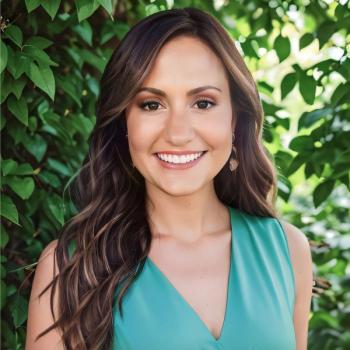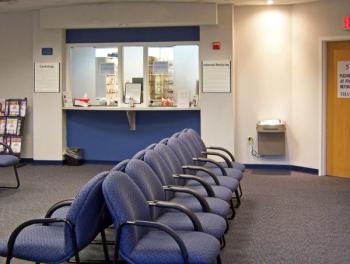
Medical practice valuation: How to determine the financial value of your practice
An accurate valuation of the business remains vital for financial and retirement planning, but valuation methods vary widely.
Practice valuation: They are the two most important business terms a practice owner needs to know. For a young physician venturing into private practice, they could determine his or her largest financial transaction. And to a retiring physician, practice valuation may decide the amount of sweat equity built over a career.
“A physician has worked for a long time and made a living, but when the time is appropriate, they want to receive value for the practice they’ve built up,” says Mark E. Kropiewnicki, JD, LLM, president of Health Care Law Associates, P.C. and a principal consultant with and president of The Health Care Group, Inc., Plymouth, Pennsylvania. “The seller has a ready-made income stream to sell. The buyer is looking for a ready-made income stream to buy. In business, that’s what value is all about.”
While practice valuation is a necessity when a hospital buys or leases a practice, it can also protect buyers and sellers from Stark laws, affect the distribution of property after a divorce, and impact taxes. This report chronicles some of the most important considerations in determining a practice’s value.
Breaking down value
Determining the value of a physician practice requires addressing a variety of issues: referral patterns; the age of the seller and whether he or she is staying with the practice for an extended period of time; the practice’s insurance mix; the reimbursement and economic climate at the time, and the practice specialty, says David H. Glusman, CPA, CFS, partner-in-charge, Philadelphia region for the accounting and consulting firm Marcum LLP, in Bala Cynwyd, Pennsylvania. “The single largest driving factor in the value of a practice is the cash flow available for the buyer after taking into account a fair market value compensation for the seller or replacement physician,” he says. “Especially in this age of the Stark Laws and anti-kickback legislation, it’s important for any transaction that involves a buyer and seller where there is the potential for actual or implied referrals of business to establish fair market value.”
Determining fair market value
In performing fair market value analysis of physician practices, as well as other relationships that physicians may enter into, instead of an outright sale of a practice, a variety of factors are taken into account, according to Glusman.
“Two physicians in the same geography in the same specialty may not have the same fair market value compensation,” he explains. “The relative efficiency in the practice is certainly one criterion. The other issues that relate to the practice, how it is operating and its profitability also are carefully evaluated. At the end of the day, selling a medical practice has become a lot more like selling any other business; the buyer is looking for a return on their investment in the form of cash flow and potential growth.
“The combination of art and science in preparing a business valuation for a medical practice is understanding the relative risks which go into the capitalization rate to be used in the economic environment that allows for the determination of the likely cash flow stream. The seller is looking for the sale price to reflect the past efforts to build the practice, its reputation, and the revenue it will continue to provide to the new owner,” Glusman adds.
Tangible and financial assets, patient accounts receivable, office building, goodwill, and intangible assets are all factors that determine a practice’s value. Tangible and financial assets include the practice’s equipment and furniture, cash, prepaid insurance [unexpired insurance premiums], and other assets less liabilities, including payroll taxes, loans, and retirement plan contributions, DeMuth says.
Because most medical practices are cash basis taxpayers, patient accounts receivable do not normally show up on their financial statements, according to DeMuth. “The amount of the receivables should be based upon the amount charged, which is expected to be collected,” he says. “There are several ways this could be calculated depending upon the information available.”
A word about goodwill
Practice goodwill is generally the most subjective and variable asset in valuing a medical practice. Valuing the intangible assets and goodwill of a medical practice can be a contentious issue.
“Hospitals don’t want to pay anything for goodwill. If a younger physician takes the place of a senior physician, it is assumed that the younger physician won’t be able to earn what a seasoned, more established senior physician earns,” Kropiewnicki says. “A hospital buys a practice because they want the physician, for example, a surgeon because the hospital wants to make sure there are enough surgeons to meet patient needs in the hospital’s catchment area.”
With the expected proliferation of ACOs established by hospitals, purchases of physician practices by hospitals may increase dramatically, so that there will be enough physicians to take care of all the patients contracted to the ACO, Kropiewnicki adds.
If the practice or related entity owns the office building, a commercial real-estate appraiser normally appraises the structure. If the office is leased, the leasehold may have a value depending upon the number of years remaining, amount paid for rent compared to going market rent, and the ability to renew the lease, DeMuth explains.
Office location and profitability are also important, according to Kropiewnicki. “If a practice is in the middle of nowhere, rural versus suburban Pennsylvania or New Jersey, then the rural practice will almost certainly be worth less than the suburban practice, all else being equal,” he says. “Also, profitability is a major factor, so if you have two practices in the same geographic area each grossing $1 million, and one physician is making $300,000 and the other physician is netting out $500,000, a buyer should be willing to pay more for the more profitable practice.”
“While there are numerous factors which could affect it, the value of goodwill is generally dependent upon the ability of the purchaser to be able to earn a superior return from the practice compared with what could normally be expected to be earned by physicians in the specialties represented in the practice,” DeMuth says.
The Health Care Group publishes the Goodwill Registry, a large database of healthcare practice transactions from all over the country and source of actual goodwill values paid. It lists goodwill as a percentage of a practice’s gross income and has other financial information about the practices reported to them by specialty.
“When buying a home, comparables exist-you can compare homes in different neighborhoods,” Kropiewnicki says. “No neighborhood level comparables exist like that when it comes to medical practices. The Goodwill Registry comes closest to providing healthcare practice comparables, but on a wider geographic scale.”
Although it’s usually inappropriate to solely apply rules-of-thumb in valuing medical practices, especially goodwill and intangible assets, the Goodwill Registry can be used to support or confirm the valuation results achieved using other valuation methods.
“Even when using a database of sales data, significant thought needs to go into understanding similarities and differences in published data, such as the Goodwill Registry. Some data is based on matrimonial disputes, some are arm’s-length sales, some are based on internal sales transactions which may have other, tax driven components to them. Failure to fully take these issues into account is likely to lead to erroneous conclusions,” Glusman says.
Old formulas may no longer apply
The value of a practice will always be based on the specifics of that practice as a business. “With that said, the old formulas and multipliers of revenue that were rules of thumb for the value of a practice hold true less and less today than they did 15 or 20 years ago,” Glusman notes. “There was a time when primary care practices routinely sold for between 1 and 1.25 times annual gross revenue. To the extent there are generalities today, the multiplier on gross revenue has tended to come down.” (See sidebar, “Factors and formulas for determining a practice’s value.”)
Glusman cites the example of a retiring solo practitioner in a rural area who may not be able to sell the practice for a significant sum. “The buyer will weigh the price to be paid to the retiring physician against the cost and time necessary to start a practice in a similar area from scratch. Since it can take several years to start a new practice to reach a reasonable level of profitability, the buying physician will look at the alternative cost and revenue stream.”
In a larger practice or one with some additional specialty there may be more opportunity to improve efficiencies or reduce costs, says Glusman. In these cases the physician may be able to obtain a value at or above .75 times gross revenue, a figure that people think of today as one rule of thumb,” Glusman explains.
In DeMuth’s opinion, there are no appropriate formulas to plug into gross or net incomes to determine the value of a medical practice. “Whenever we see claims to the contrary, we can typically make examples of two practices, one of which is particularly valuable and the other is not, and conclude that the formula values them identically,” he says.
“A medical practice possesses unique characteristics that a non-medical business does not possess,” notes Vincent M. Brinly, director of valuation services at Practice Valuation Group, Washington, D.C. “Consequently, certain methods of appraisal are not appropriate and should not be used to value medical practices. For example, since few medical practices are comparable, the market method has severe limitations and should only be used in conjunction with another appraisal method. The cost method disregards professional goodwill and concentrates on the value of the tangible assets,” he says.
“In my opinion, debt-capacity is the most appropriate method to use to value a medical practice” Brinly adds. “The capitalization-of-earnings method and the debt-capacity method are similar; both capitalize adjusted net cash flow to determine fair market value. In a professional practice, the emphasis is on the value of professional goodwill. Since the focus of the debt-capacity method is on the transfer risk or value of the patient records that can be transferred from one doctor to another, it is the most fitting method of appraisal to value a professional practice,” he explains.
Legal considerations
Numerous legal considerations are part of establishing fair market value opinions for physician practices, according to Glusman. “A full understanding of the Stark Law and related regulations and anti-kickback rules is an important issue when hospitals are buying or leasing practices,” he says. “For a physician who is, literally, selling the practice walking out the door and leaving town, not practicing medicine in any way and with no ability to make a referral to the buyer, the Stark rules and anti-kickback regulations may not even come into play.”
On the other hand, a cardiologist who is selling his or her practice to a hospital, becoming a full-time employee of the hospital, as well as the medical director for the cardiology department, and being in a position to admit patients and refer patients to other hospital-based cardiac facilities, has an extraordinarily high level of likelihood of making referrals and the full weight of the Stark and anti-kickback regulations come into play, according to Glusman.
In connection with hospital purchases of medical practices, both the physician and the hospital need to follow IRS and other governmental guidelines for valuing the practice. For example, the IRS prefers the discounted cash flow method in medical practice valuations involving tax-exempt entities, such as not-for-profit hospitals.
“In addition to legal issues, tax issues need to be taken into consideration such as the tax impact of earnings in S corporations, partnerships and other flow through entities that commonly exist for physician practices,” says Glusman.
Taxation is affected by the legal form in which the practice seller conducts business, be it a proprietorship, general partnership, limited liability company or partnership, or a C or an S corporation, DeMuth explains.
“For example, are the assets of the medical practice being sold to a hospital or related entity or is a new doctor buying stock in a professional corporation?” he says. “When a hospital is buying the assets of a practice, it may be attractive from the tax standpoint for it to acquire personal goodwill from the doctors who own the practice, individually as opposed to buying the entity’s goodwill, which could cause either a potential additional layer of tax or tax at a higher rate than if personal goodwill was utilized.”
“The deal has to take into consideration the legal structure and the tax implications that carries,” Glusman agrees. “Nonetheless, the net price paid for the assets, including any goodwill, must be fully justified as fair market value to avoid governmental allegations at a later date.”
The purchase or sale of a medical practice or of an ownership interest can be one of the biggest financial transactions in a doctor’s life. “The physician’s financial interest in his medical practice may be more than his home,” DeMuth says. “To assure that the doctor is paid or pays appropriately for what has been or will be his life’s work, its incumbent upon him or her to see that the practice’s value is appropriately determined and legally sound.”
Factors and formulas for determining a practice’s value
Vincent M. Brinly, director of valuation services at Practice Valuation Group, Washington, D.C., offers the following factors to determine a practice’s value:
Macroeconomic Risk Factors
- CMS Fee Schedule
- Maldistribution of doctors in catchment area
Practice Specific Risk Factors
- Payer Profile
- Expense Ratios vs. Medical Group Management Association (MGMA) Benchmarks
- Active Patient Population
- Referent Network
- Doctor Productivity
Amount and Quality of Normalized Adjusted Net Cash Flow
Certainty of Future Earnings
- Reliability and continuity of future earning capacity
- Amount and quality of current earning capacity
Transfer Risk
- Reflects the amount of professional goodwill that can be transferred from one doctor to another.
PRACTICE VALUATION GROUP, LLC DEBT-CAPACITY METHOD©
value = (adjusted net cash flow) x amortization factor
(debt service coverage ratio)
Source: The Practice Valuation Group LLC
DEFINITIONS:
ADJUSTED NET CASH FLOW
Adjusted net cash flow is the cash flow available for debt amortization before income taxes but after fixed and variable expenses and professional compensation are paid. Non-recurring or extraordinary expenses as well as excess professional wages and discretionary fringe benefits are eliminated to normalize practice earnings.
DEBT SERVICE COVERAGE RATIO
The debt service coverage ratio (DSCR) reflects the risk peculiar to a specific subject practice as well as the general economic outlook and the outlook for the health-care industry. The DSCR indicates the transfer risk or potential erosion of professional goodwill. The lower the risk, the lower the capitalization rate, the higher the value of the practice.
AMORTIZATION FACTOR
The amortization factor, which is the statistical summation of the terms and conditions of a credit accommodation, reflects the principal ratio and term of the loan.
Newsletter
Stay informed and empowered with Medical Economics enewsletter, delivering expert insights, financial strategies, practice management tips and technology trends — tailored for today’s physicians.















